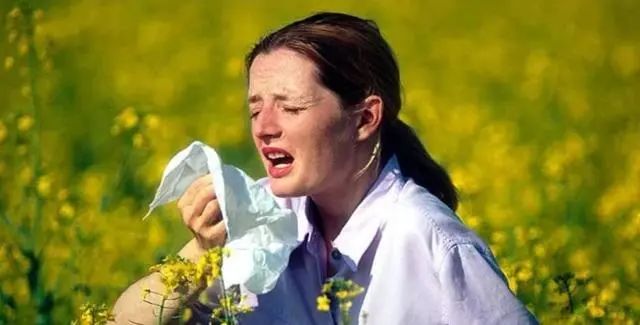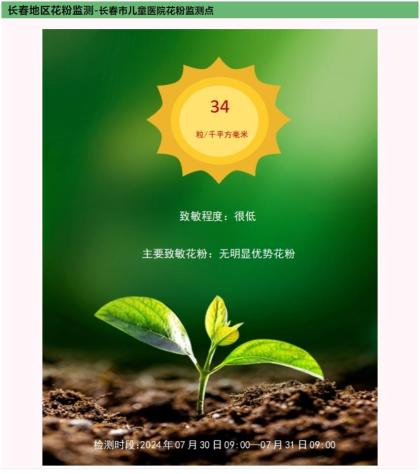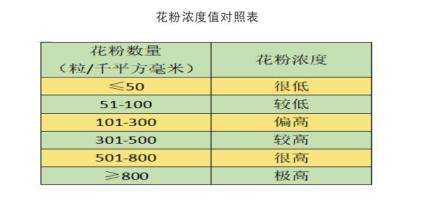Pollen disease occurs frequently in autumn. Why are we allergic to pollen?
The following article comes from pediatrician Hu Liang and author Hu Liang.

Pediatrician Hu Liang.
Allergy doctor, popular science author

Author: Hu Liang
Youth Committee of Asthma Group of Pediatric Branch of Chinese Medical Association/Youth Committee of Chronic Cough Group of Pediatric Branch of Chinese Medical Association
Sina Weibo is a popular blogger/serving thousands of allergic patients.
Every autumn, many people will encounter allergic symptoms such as itchy nose, itchy eyes, cough, itchy skin and even difficulty breathing. This seasonal allergy is called autumn pollinosis. According to the data of the World Health Organization (WHO), about 10-30% of the global population is affected by seasonal allergic rhinitis. So, why are we allergic to pollen? How to prevent and treat it?

01
What is hay fever?
Hay disease, also known as seasonal allergic rhinitis, is an allergic reaction caused by plant pollen. Pollen is a tiny powdery substance, which is the male reproductive cell of plants and is used for pollination and reproduction. Pollen will enter the air when it is spread by wind, insects or other media. If these pollen are inhaled or come into contact with our eyes, nose, skin and other parts, it may trigger an overreaction of the immune system and lead to various discomfort symptoms.



02
Why are hay fever frequent in autumn?
1. The peak of plant pollen: Autumn is the peak of pollen for many plants, especially weeds. Common sensitized plants include ragweed, wormwood, Humulus Humulus, Chenopodiaceae and so on. The dry weather and strong wind in autumn make it easier to spread pollen into the air, which leads to more frequent contact with pollen.
2. Allergic reaction of immune system: The human immune system was originally used to protect us from harmful substances, but for some people, their immune system mistakenly regards pollen as an "intruder" and produces antibodies to fight against these pollen. This process releases a chemical called histamine, which causes allergic symptoms such as stuffy nose, runny nose, sneezing and itchy eyes.
3. Genetic and environmental factors: Allergic constitution has a certain genetic tendency. If parents or family members have a history of allergies, the possibility of allergies in their children will also increase. In addition, environmental factors such as air pollution, indoor and outdoor temperature difference, etc., may also aggravate pollen symptoms.
03
Common symptoms of hay fever
The symptoms of autumn pollinosis are diverse, and the common ones are:
Nasal symptoms: runny nose, stuffy nose, sneezing, itchy nose, etc.
Eye symptoms: itchy eyes, tears, redness, conjunctivitis, etc.
Respiratory symptoms: cough, itchy throat, asthma, etc.
Skin symptoms: itchy skin, rash, urticaria, etc.
These symptoms may affect daily life and work, so timely prevention and treatment is particularly important.
04
How to prevent autumn pollinosis?
1, reduce contact with pollen:
Pay close attention to the pollen index: you can know the daily pollen concentration through weather forecast or special pollen monitoring website, and try to reduce outdoor activities during the pollen peak period.
Avoid going out during peak hours: pollen concentration usually peaks in the morning and evening, so try to avoid going out during these hours.
Close doors and windows: In the high pollen season, try to close doors and windows and use air conditioners or air purifiers to keep indoor air clean.
2. Maintain personal hygiene:
Wash your face and hands frequently: After going home, wash your face and hands in time to avoid pollen residue.
Change clothes: Change clothes in time after going out to prevent pollen from entering the room.
Nose washing: Using normal saline to wash the nasal cavity can effectively remove pollen and other allergens in the nasal cavity.
Pollen blocking agent: before going out, applying pollen blocking agent around the nostrils can effectively block pollen from entering the nasal cavity and reduce the occurrence of allergic reactions.
3, improve the indoor environment:
Use an air purifier: An air purifier can filter pollen and other allergens in the air and keep the indoor air fresh.
Cleaning household items: regularly clean sheets, curtains, carpets, etc. to reduce the accumulation of pollen and dust mites.
Maintain moderate humidity: moderate humidity can reduce the pollen concentration in the air, but too high humidity may lead to mold growth.
05
Treatment of autumn pollinosis
1, drug therapy:
Antihistamines: Antihistamines can prevent the action of histamine and relieve symptoms such as itchy nose, runny nose and sneezing. Common antihistamines are loratadine and cetirizine.
Nasal hormone spray: nasal hormone spray can effectively alleviate nasal symptoms, such as mometasone furoate and fluticasone propionate.
Nasal decongestant: nasal decongestant can temporarily relieve nasal congestion, but it should not be used for a long time to avoid rebounding nasal congestion.
2, immunotherapy (desensitization therapy):
Desensitization therapy: Desensitization therapy, also known as specific immunotherapy, is to gradually increase the exposure of patients to specific allergens, so as to make their immune system tolerant, thus alleviating or eliminating allergic symptoms and obtaining long-term curative effect. Desensitization treatment needs to be carried out under the guidance of a doctor, usually lasting for 3-5 years. At present, the desensitization schemes for autumn pollen can be routinely obtained in China, including sublingual drops of Artemisia annua and sublingual sprays of ragweed and Artemisia argyi.
3, omalizumab treatment:
Omalizumab (omalizumab) is a monoclonal antibody drug, which has been proved to be effective for severe allergic asthma and chronic spontaneous urticaria by binding with IgE and blocking its mediated allergic reaction. Studies have shown that omazumab also has a significant effect on some patients with refractory hay fever. According to a systematic review and meta-analysis in 2022, omazumab showed good effect in the treatment of hay fever, significantly reducing the symptom score and drug demand.
Usage: Omazumab is usually given by subcutaneous injection, which needs to be given before hay fever comes. The specific dosage and frequency need to be determined according to the patient’s weight and IgE level.
06
tag
Although autumn pollinosis is miserable, as long as we understand its causes and take scientific prevention and treatment measures, we can completely alleviate the symptoms and enjoy a comfortable autumn.
[Author of this article]
Hu Liang
Pediatricians insist on evidence-based
Continue to slide to see the next touch to read the original text.

Vigorous and slide up to see the next one.
Original title: "Autumn pollinosis is frequent, why are we allergic to pollen? 》
Read the original text